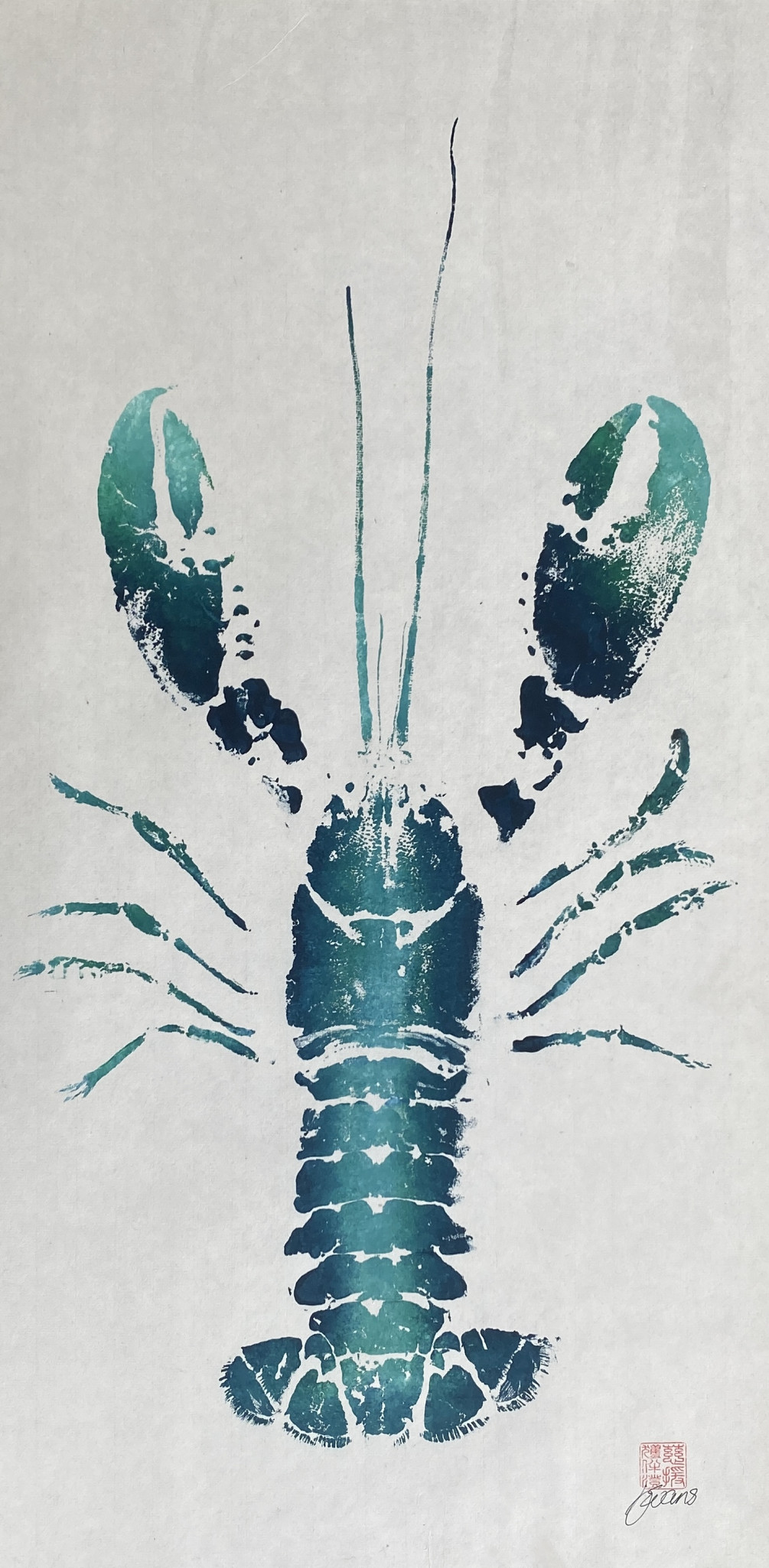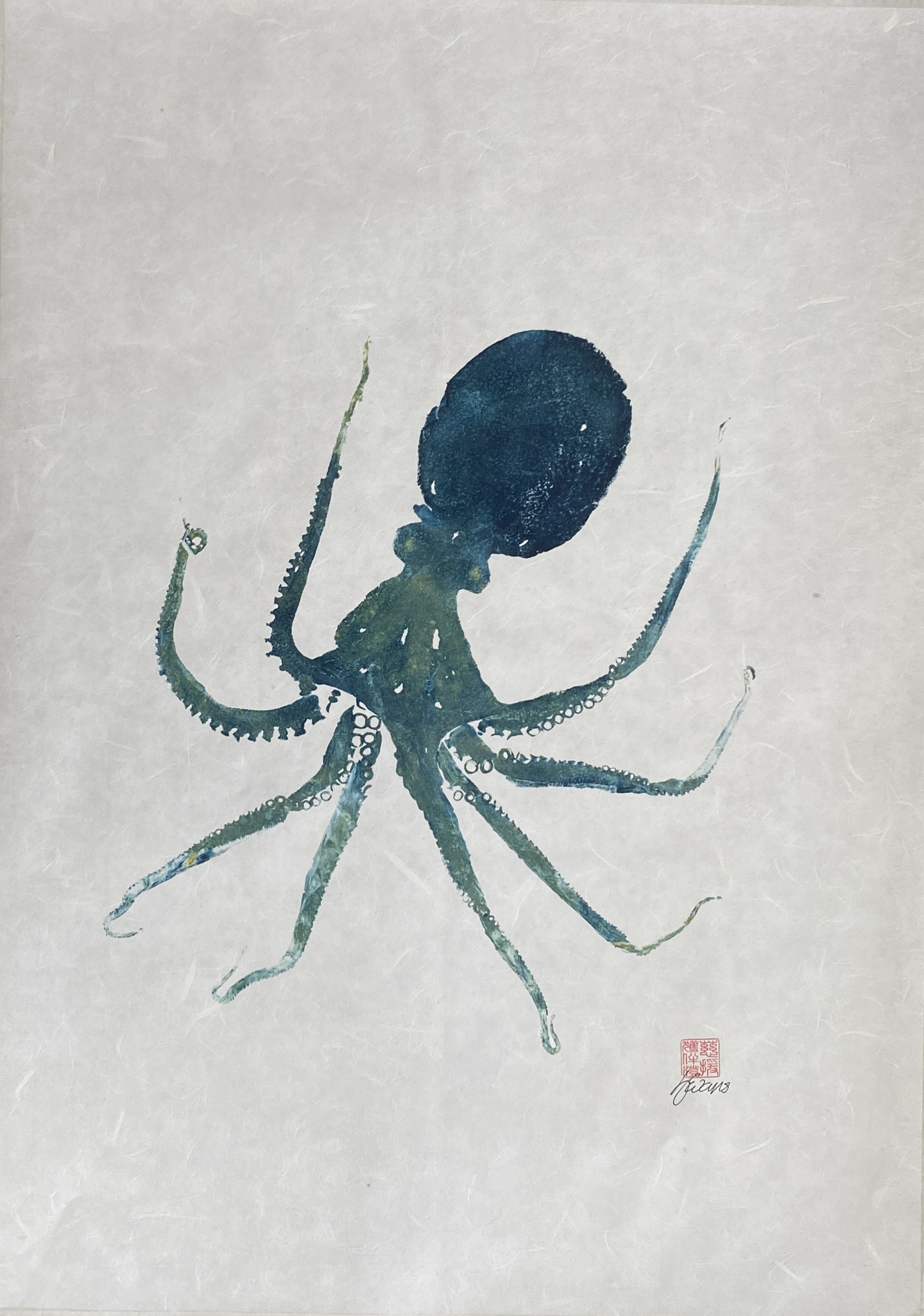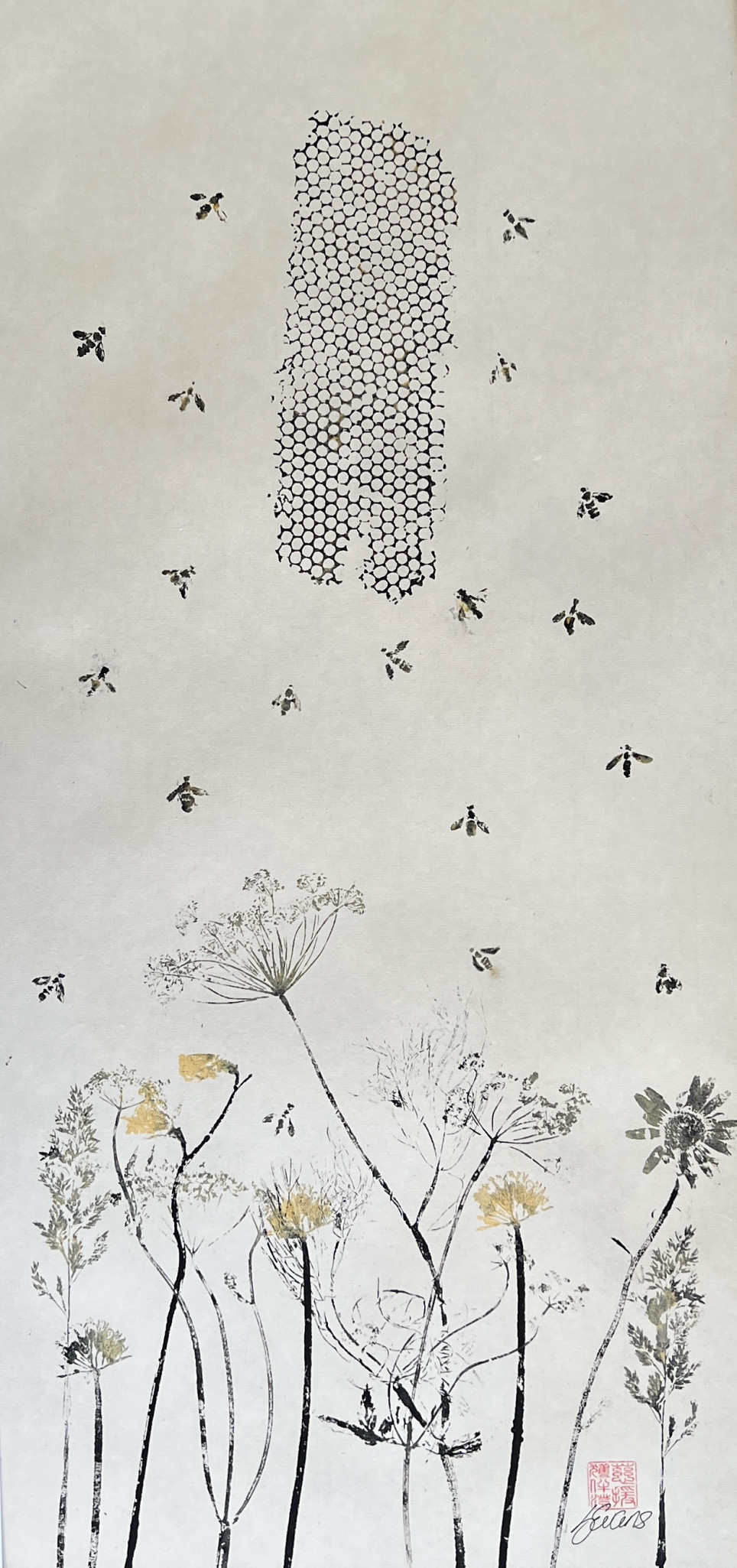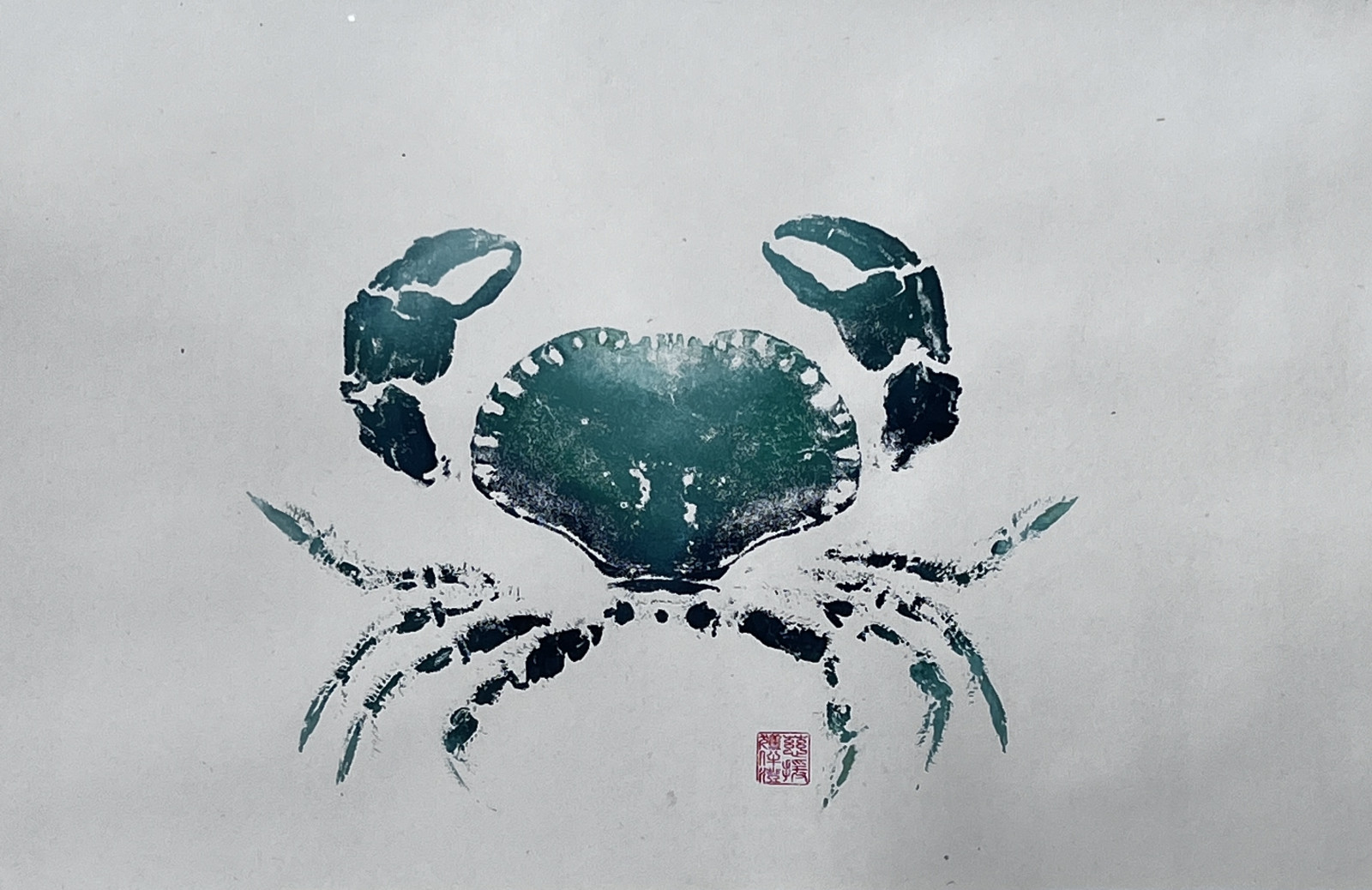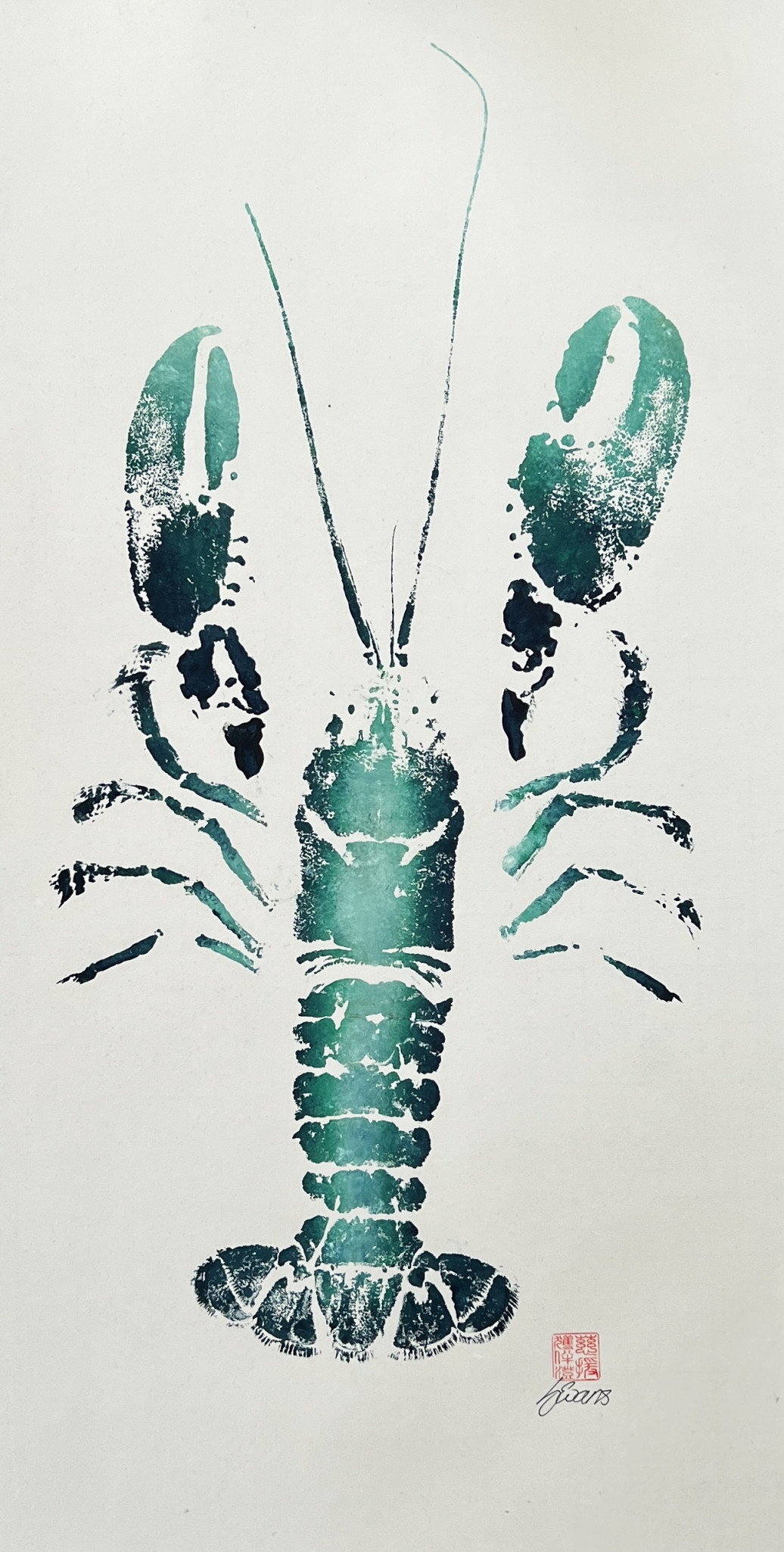Jane Evans
Living on the Island of Anglesey it's hard not to be inspired by my surroundings. I discovered Gyotaku in 2017 when asked to do a commission for Dylan's Restaurants. I've continued using this method of print making ever since.
Gyotaku is Japanese and means fish rubbing. It originated in Japan in the 1800's when a lord went out on a fishing trip and caught a spectacular specimen. He wished to record it so he could prove to his friends the catch was genuine. Either he or one of his servants came up with the idea of using sumi ink to paint the surface of the fish and then they pressed a sheet of paper or silk over the surface and an impression was taken of the fish. This became an art form in Japan with nobles displaying Gyotaku prints in their homes.
In the 21st century, Gyotaku is still a relatively unknown art form but practiced in coastal locations across the globe. I try to work with local specimens when they are available and have a local fisherman who keeps me supplied. I don't just print fish, I've also developed the ability to work with shellfish too and I make prints from shells and botanical specimens too.
I use Chinese, Japanese and Thai papers for my practice and when the print is taken it then needs to be flattened so I use the authentic method of Urauchi for this. Uruachi is taking the print paper and using a special goat hair brush, applying a layer of very thin flour and water paste. When the print is completely flat and all air bubbles have been removed, a second sheet of paper is then placed over the print and using a palm brush, the two are pressed together. The two sheets are now left to dry for around 24 hours and become fixed and flat. This now leaves the print in a condition where it can be hung in a frame.
Quick Links
- Contact us about the artist's work
- Commission the artist
- View all available artwork
Exhibitions
Awards
Ken Billany Prize











